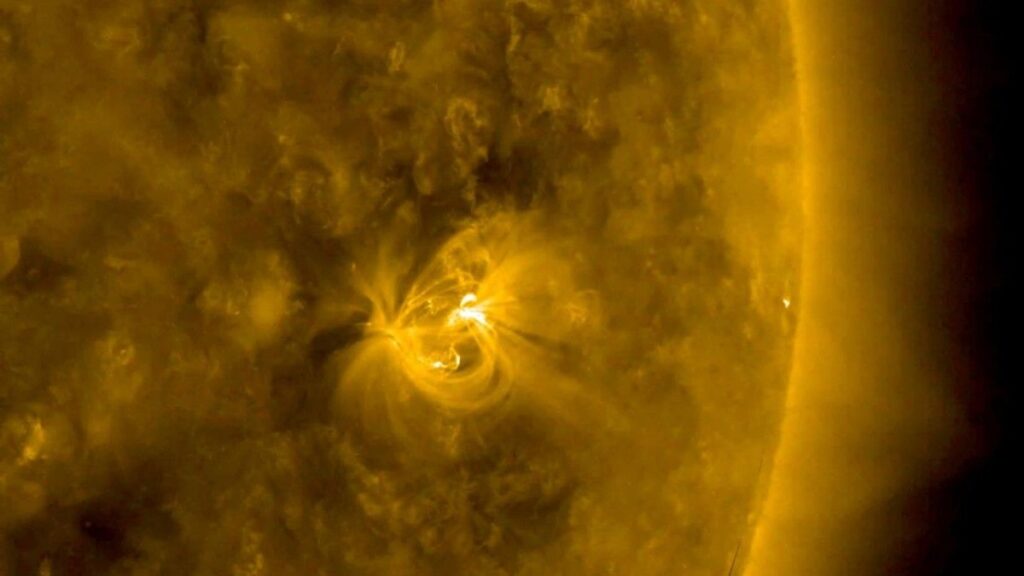According to a new study, the unexpected rise in solar activity during the current solar maximum could be linked to a lesser-known, 100-year-long cycle that is just starting to ramp up again.
If this is accurate, solar activity may increase further in the coming decades, posing a hazard to Earth-orbiting spacecraft and continuing to cause bright auroras around the world.
Solar activity naturally waxes and wanes throughout the solar cycle, which lasts approximately 11 years and transitions from our home star being generally peaceful in a phase known as solar minimum to a chaotic mass that frequently spits out tremendous solar storms at solar maximum, and back again.
However, various additional cycles influence solar activity. One example is the Hale cycle, which determines how individual magnetic bands migrate over the sun’s surface and has recently been found to influence the course of the sunspot cycle. Historical records also demonstrate that the sun’s activity has fluctuated over the course of several millennia. These included the Maunder Minimum, which lasted from 1645 to 1715 and saw significantly lower solar activity.
Another, lesser-known, repeating pattern in solar activity is the Centennial Gleissberg Cycle (CGC), which changes the strength of sunspot cycles every 80 to 100 years.
According to a recent study that was published on March 2 in the journal Space Weather, scientists speculate that the CGC may have simply “turned over,” or begun anew. This may also be the reason why the current solar maximum, which was formally declared to have started in early 2024, has proven to be far more unpredictable than anticipated.
After examining variations in the “proton flux,” or quantity of positively charged particles, in Earth’s inner radiation belt, the first of two doughnut-shaped bands of charged particles encircling our planet, the research team reached this result. The Van Allen belts are the collective name for these bands.
Solar Cycle 25 (SC25), the highest phase of the current sunspot cycle, may be coming to an end. Extreme space weather phenomena, such as a supercharged geomagnetic storm in May 2024 that caused some of the most widespread auroras in the previous 500 years, have been a part of this extremely active peak. But this burst of activity was unexpected at first.
Unexpected solar activity
During solar maximum in the preceding sunspot cycle, SC24, the sun was unexpectedly calm. Because of this, NASA and NOAA space weather specialists first predicted that the same thing would occur during SC25, but they later acknowledged that this was incorrect.
Since satellites can be thrown out of orbit when Earth’s upper atmosphere swells, problems could arise if future solar maxima are more active than the current high. This has already happened to a number of spacecraft in recent years.
However, the rapid growth of private satellite “megaconstellations” that could not be prepared to handle radiation spikes could make the issue worse in the decades to come.
Because astronauts are susceptible to dangerous radiation emitted from our home star, increased solar activity could also be an issue for them. In addition, there will probably be a lot more humans in space in coming years as a result of growing private spaceflight and planned trips to the moon and Mars.

